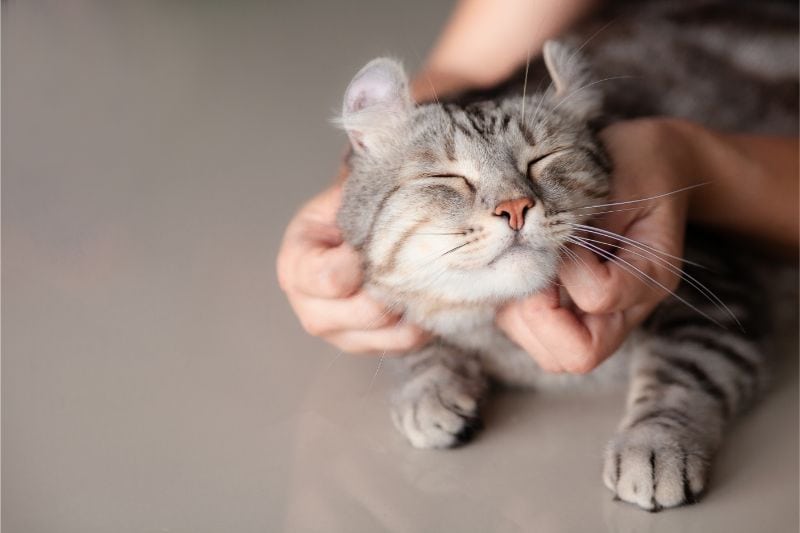Lost in Translation: Explaining Why (and How) Cats Purr

Purring is arguably one of the most delightful ways cats have of communicating their deepest thoughts and feelings.
Although purring tends to happen most often when cats are cozy, satisfied, and deeply content, there are other reasons that explain this feline-specific phenomenon. What’s more, it’s their special anatomy that allows them to make this pleasing sound!
The Purr Vs. The Roar
Cats have a series of bones in the throat called the hyoid apparatus. Responsible for supporting the larynx and the tongue, these components are either bony or flexible.
In large cats that roar, such as tigers or lions, it is believed that their hyoid apparatus is more cartilage than bone (although young wild cats do purr as cubs when suckling). Domestic felines have more of a rigid hyoid that permits purring instead of roaring.
More on How They Do It
Research is ongoing regarding the exact process of purring, but we know that the diaphragm and the larynx are engaged by nerve activity in the brain, occuring in bursts every 20-30 seconds. The impulse happens on inhalations and exhalations, enabling an uninterrupted sound.
Multi-Tasking Cats
Most people find that cats purr when they feel good, such as during a solid petting/snuggling session. But cats also purr when they are begging for food, eating, grooming, playing, kneading, and more. Perhaps even more importantly, some cats purr as a self-soothing strategy when they are scared, in pain, or close to death.
The Hertz Factor
Our pet cats purr at a frequency of about 26 Hertz. Incredibly, this frequency promotes bone regeneration! In other words, purring goes beyond self-soothing to self-healing.
Amazing Facts
Since they learn everything from their mothers, young kittens purr while drinking milk. Purring is an intensely local approach to communication (the sound is designed not to travel very far), it may be a way to connect in social situations that also include allogrooming, playing, and nursing.
Cats Purr in Different Ways
Analysts have discovered that purring can vary depending on the situation. Whether they are cozying up to their favorite person, eating a special treat, or being groomed by another cat, each purr is marked by highly individualized sounds.
One More Reason
There are so many reasons that cats captivate us, but it’s their ability to purr that is the most intriguing characteristic. For many cat owners, the purr contributes to the deep bond between you.
If you have any questions or concerns about your cat’s behavior, please let us know. We are always here for you at Beverly Hills Veterinary Associates.
